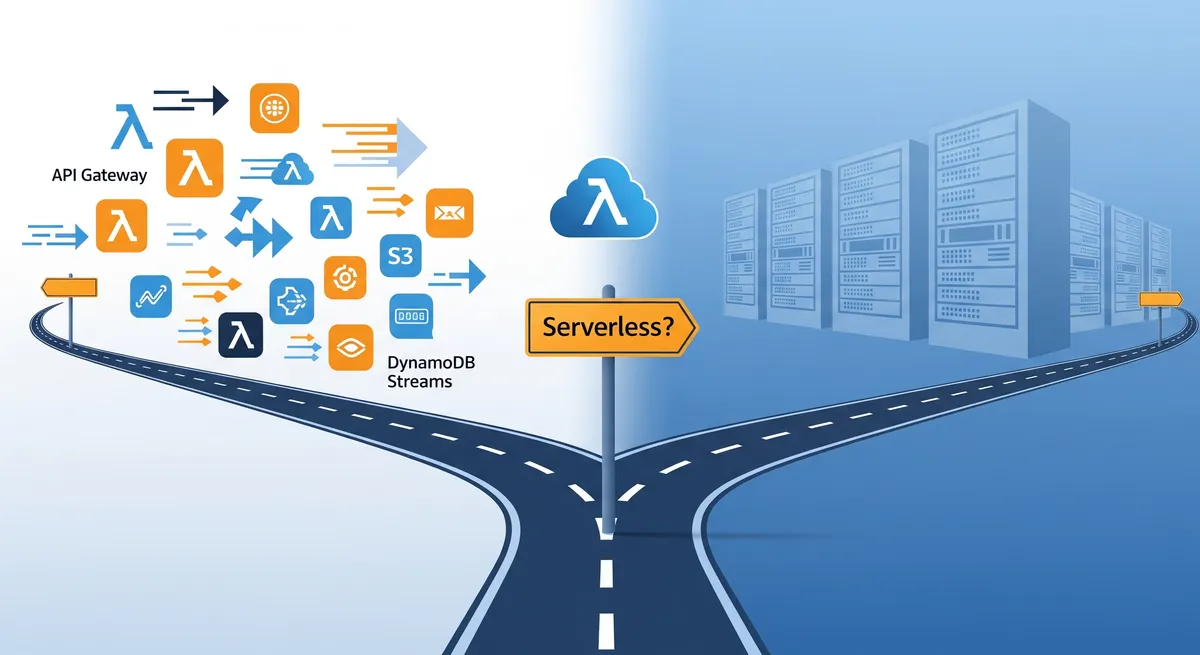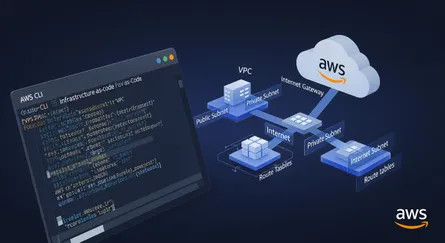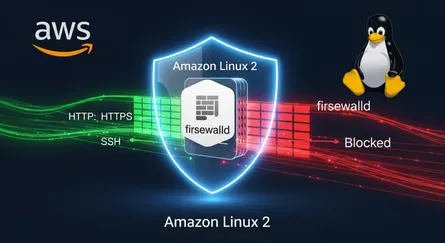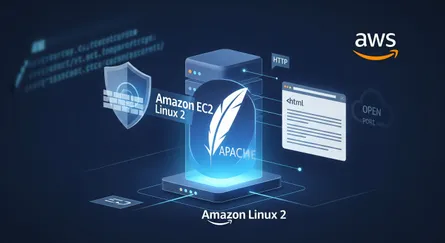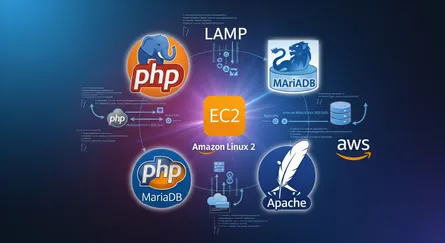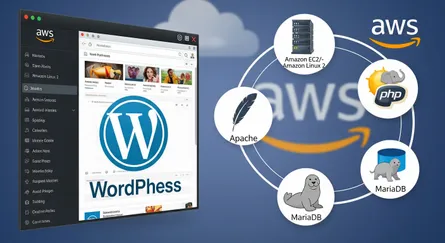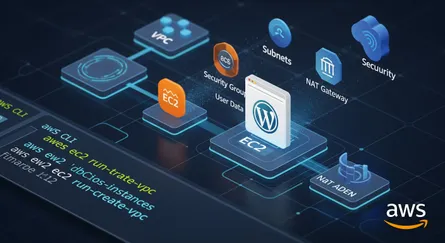As a DevOps engineer working with AWS, understanding when to use serverless architecture can be a game-changer for your projects. Serverless computing offers numerous benefits, but it’s essential to know when it is the right choice. In this comprehensive guide, we’ll delve into the ideal scenarios for using serverless, explore its advantages and disadvantages, and provide real-world success stories to illustrate its effectiveness.
Understanding Serverless Architecture
With Serverless architecture, developers can create and operate apps without having to worry about maintaining server infrastructure. All you have to do is write code—AWS takes care of server deployment, scaling, and maintenance. An excellent illustration of a serverless service that runs code in response to events while autonomously controlling the necessary computational resources is AWS Lambda. Applications can be easily deployed and scaled thanks to the abstraction layer’s simplification of development and operations.
When to Consider Going Serverless?
Support Microservices Architecture
Microservices architecture is a perfect match for serverless computing. Microservices are single-purpose, tiny, independently deployable services. Every microservice can be handled by serverless functions, such as AWS Lambda, which enables autonomous scaling, deployment, and management.
Example: An E-commerce Platform
An e-commerce platform can benefit from serverless by breaking down functionalities into microservices. For instance, separate Lambda functions can handle user authentication, order processing, and payment handling. This decoupling enhances scalability and resilience, ensuring that each microservice can scale independently based on demand.
Event-Driven Applications
When functions are triggered by events, such file uploads, HTTP requests, or database changes, serverless programming shines.
Example: Image Processing
Think about a program that handles picture uploads to an S3 bucket. AWS Lambda can be used to activate a function that will process every image that is uploaded, increasing system responsiveness and efficiency. By utilizing serverless architecture’s event-driven design, this configuration makes sure resources are only used when necessary.
Applications with Variable Workloads
Serverless architecture offers significant advantages for applications with fluctuating workloads. Conventional servers could find it difficult to handle varying traffic, which could result in either over- or under-provisioning.
Example: Social Media Analytics
Serverless computing enables applications such as social media analytics that see spikes in traffic during particular events or periods to autonomously scale in response to incoming requests, guaranteeing peak performance without requiring human involvement. Because of its adaptability, serverless architecture is perfect for managing erratic traffic patterns.
How Does Serverless Accelerate Development and Deployment?
Quicken Development and Implementation: The time and effort required to design, test, and deploy applications are decreased by the built-in integrations and abstractions offered by serverless platforms. The entire development process is accelerated by features like automated scaling, integrated monitoring, and streamlined deployment pipelines.
Example: Rapid Prototyping
Prototyping fast is crucial in a startup environment. Developers may evaluate and deploy new features quicker with serverless, as it removes issues with the underlying infrastructure and speeds up time to market. Startups are able to innovate more quickly and adjust to market changes more effectively because to its rapid iteration feature.
Is Serverless Cost Efficient for Sporadic Usage?
Cost Efficiency in Sporadic Usage: Serverless architecture is particularly cost-effective for applications with intermittent usage patterns. Since you pay only for the compute time used, it can lead to significant cost savings compared to running dedicated servers continuously.
Example: Cron Jobs
Think about a cron task that processes data several times each day. AWS Lambda is considerably more cost-effective than running a server all the time because you simply pay for the execution time. For crucial but rare operations, this pay-per-use strategy works well.
Real-World Success Stories for Serverless Architecture
Let’s look at some real-world success stories that highlight the benefits of serverless architecture:
-
Netflix: To manage traffic spikes during popular shows and events, the streaming behemoth employs serverless architecture. Netflix can automatically scale to meet demand by utilizing AWS Lambda, which guarantees a smooth viewing experience for users.
-
iRobot: The business that created the well-known Roomba vacuum cleaner processes data from its army of robots using AWS Lambda. With this method, iRobot can scale dynamically in response to data volume, resulting in processing that is both economical and effective.
-
The Financial Times: This renowned publication uses serverless architecture to manage content delivery. AWS Lambda helps the Financial Times ensure their content is delivered reliably and quickly to a global audience.
When Serverless Might Not Be the Best Fit?
Long-Running Processes
Serverless architecture is not suitable for long-running processes. For instance, the maximum execution duration for AWS Lambda is fifteen minutes. Conventional server-based solutions may be more suitable for activities requiring longer processing periods. For long-running tasks, think about utilizing ECS or dedicated EC2 instances.
Fine-Grained Control
The abstraction of underlying infrastructure in serverless computing may be a disadvantage for users who require precise control over the environment. Applications that demand particular networking settings or hardware configurations might not be a good fit for serverless architecture. Containers or traditional virtual machines might provide the required control.
Debugging and Monitoring
Although serverless makes deployment simpler, monitoring and debugging may become more difficult. Debugging and tracing problems with serverless functions might be difficult due to their transient nature. Though they can be useful, tools like X-Ray and AWS CloudWatch still have more complexity than in traditional setups. Make sure you have effective monitoring and logging procedures in place.
Vendor Lock-In
Vendor Lock-In When using serverless architecture, vendor lock-in must be taken into account. It may be challenging to switch providers if you are highly dependent on one’s services. It’s critical to balance the advantages of working with a single provider with any potential concerns. Considering mobility while designing can help to reduce some of these concerns.
State Management
Serverless functions are stateless by nature, making state management more complex. Applications requiring persistent state across function executions may need to use additional services like AWS DynamoDB or S3, adding complexity to the architecture. Design patterns such as event sourcing or using stateful services can address this challenge.
Limited Offline Functionality
There is limited offline functionality with serverless functions since they usually need an internet connection to communicate with cloud services. A serverless method might not be the best choice for applications that must run offline or in disconnected situations. Take into consideration hybrid architectures that blend offline-capable and serverless components.
Pros and Cons of Serverless Architecture
Let’s summarize the pros and cons of serverless architecture:
Pros:
- Cost Efficiency: Pay only for what you use.
- Scalability: Automatic scaling based on demand.
- Reduced Operational Overhead: No need to manage servers.
- Faster Development: Focus on writing code rather than managing infrastructure.
Cons:
- Execution Time Limits: Not suitable for long-running processes.
- Cold Start Latency: Initial request can be slower due to function spin-up time.
- Complex State Management: Stateless nature can complicate state management.
- Limited Offline Functionality: Requires internet connectivity for cloud interactions.
Conclusion
Many benefits can be gained from serverless architecture, especially for systems with fluctuating workloads, microservices, and event-driven functionality. It increases cost effectiveness, speeds up development, and scales itself. When determining whether serverless is the best option for your project, it’s crucial to take into account its restrictions, including possible latency problems and execution time limits.
You may make selections that best fit the requirements and commercial objectives of your application by knowing when to employ serverless and when to choose traditional architectures. More flexible, scalable, and affordable solutions can result from properly utilizing serverless.
References
- AWS Lambda Documentation.), https://aws.amazon.com/lambda/features/
- What is Serverless Computing? - AWS.), https://aws.amazon.com/serverless/
- Serverless Architectures - Martin Fowler.), https://martinfowler.com/articles/serverless.html
- When (and When Not) to Use Serverless - Serverless Framework Blog.), https://www.serverless.com/blog/when-to-use-serverless
- AWS Lambda Best Practices - AWS Documentation.), https://docs.aws.amazon.com/lambda/latest/dg/best-practices.html
- Microservices with Serverless - AWS Whitepapers.), https://aws.amazon.com/whitepapers/?whitepapers-main.sort-by=item.additionalFields.sortDate&whitepapers-main.sort-order=desc&awsf.whitepapers-content-type=*all&awsf.whitepapers-global-methodology=*all&awsf.whitepapers-tech-category=tech-categories%23serverless (Search for “Microservices Serverless”)
- Event-Driven Architecture - AWS.), https://aws.amazon.com/event-driven-architecture/
- Serverless Cost Optimization - (Example: Article from a cloud cost management blog or AWS documentation.), [Link to a relevant resource on serverless cost optimization]
- Netflix Case Study on Serverless - (Example: AWS Case Studies or Netflix Tech Blog.), [Link to Netflix serverless case study]
- iRobot Case Study on AWS Lambda - (Example: AWS Case Studies.), [Link to iRobot serverless case study]
- Serverless Framework Documentation.), https://www.serverless.com/framework/docs/
- “The Pros and Cons of Serverless Architecture” - (Example: Article from a reputable tech publication like InfoQ, The New Stack.), [Link to a relevant article discussing pros and cons]
